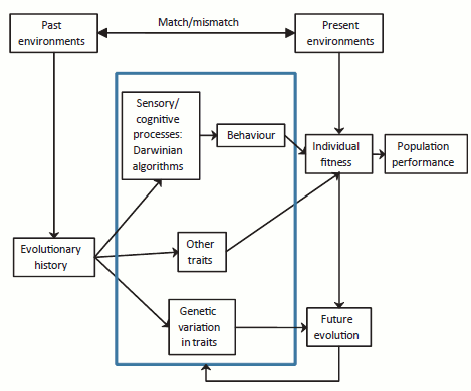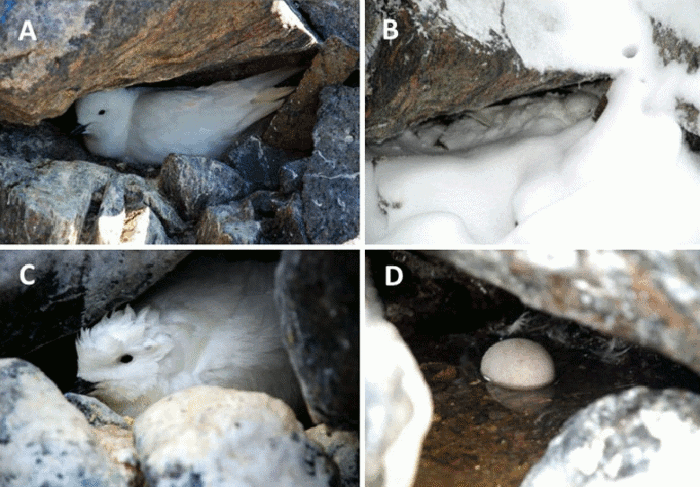SICB Annual Meeting 2013
January 3-7, 2013
San Francisco, CA
Symposium: Coping with uncertainty: Integrating physiology, behavior and evolutionary ecology in a changing world
Organisms differ in the degree to which they are able to cope with unpredictable environmental perturbations. Some successfully manage challenges posed by uncertainty and fluctuating environmental conditions, while others are unable to cope. Little is known about what distinguishes these individuals and even less about the underlying mechanisms and their fitness consequences. With human-induced rapid environmental change on the rise, organisms’ exposure to novel, unpredictable and often inhospitable environmental conditions is magnified. Individuals are more likely to experience conditions they have not experienced during their evolutionary or ontogenic history. As a result, for example, (1) formerly reliable environmental cue systems become unreliable, which may lead to mismatch between resource phenology and the timing of life history events (e.g. emergence, molt, migration, reproduction); (2) ecosystems change substantially and become “novel” in many aspects as more successful organisms move in and change the predator-prey landscape or the dynamics of host-pathogen/parasite relationships and disease landscape. Whether or not organisms are able to respond properly to rapid and unpredictable environmental changes will likely determine their fitness and the future of the local population.

Figure 1. Past environments provide the evolutionary history that shapes sensory and cognitive processes controlling behavior, as well as other traits and genetic variation. The fit of behavior and other traits along with novel environments (that might match or mismatch past environments) influence individual fitness that governs population performance. Variations in fitness and genetic variation drive evolution that feeds back to determine future sensory and cognitive processes, behavior, other traits and genetic variation. These, in turn, loop back to influence future fitness and population performance. (Sih et al., Evol. Appl. 2011)
Objective
One of the grand challenges in physiology, behavior and evolutionary ecology is to understand and predict the capacity of organisms to respond in an adaptive manner to human-induced rapid environmental change. The complex nature of this problem calls for integrative approaches. We wish to provide a forum for researchers from a wide variety of fields (behavior, physiology, evolutionary ecology, developmental biology) to facilitate communication across disciplines and better understanding of potential mechanisms that organisms may use to cope with rapid and often unpredictable changes in the environment. In addition, we aim to encourage both integrative and collaborative approaches for tackling such challenging issues.

Figure 2. The Snow Petrel, Pagodroma nivea, breeds alongside and beneath boulders in loose colonies at the French Polar Institute station at Dumont d’Urville, east Antarctica (a); snow storms driven by high winds can occur at any time during the breeding season and may virtually bury an incubating individual (b). These birds continue to incubate eggs or brood chicks with no problem but in January 2010 temperatures increased to record highs. Precipitation turned to rain and snow melted drenching incubating adults (c). Running water also flushed eggs (and chicks) out of nests (d) resulting in nest failure. All photographs by Wingfield. (Wingfield et al., J. Orn. 2011)
Sponsors
-
SICB Divisons of Animal Behavior, Comparative Endocrinology, Ecology and Evolution, Comparative Physiology and Biochemistry
Organizers
-
Zoltán Németh (UC Davis),
-
Frances Bonier (Queen’s University/Virginia Tech)
-
Scott MacDougall-Shackleton (University of Western Ontario)
Speakers
S6-1.0 Sunday, Jan. 6, 07:55 Nemeth, Z; Bonier, F; MacDougall-Shackleton, S:
Introduction
S6-1.1 Sunday, Jan. 6, 08:00 WINGFIELD, JC:
Allostasis, resilience and coping with a changing world
S6-1.2 Sunday, Jan. 6, 08:30 PERFITO, Nicole*; CALISI, Rebecca; HAU, Michaela; BENTLEY, George E.:
Integrating environmental signals for reproductive timing
S6-1.3 Sunday, Jan. 6, 09:00 VISSER, M.E.*; SCHAPER, S.V.; CARO, S.P.:
Global climate change leads to natural selection on the physiological mechanisms underlying seasonal timing
S6-1.4 Sunday, Jan. 6, 10:00 KITAYSKY, AS:
Mechanistic links between climate variability, stress, and population processes in seabirds
S6-1.5 Sunday, Jan. 6, 10:30 BOONSTRA, R.:
The role of the stress axis in coping with chronic uncertainty
S6-1.6 Sunday, Jan. 6, 11:00 DIAMOND, SE*; PELINI, SL; ELLISON, AM; GOTELLI, NJ; SANDERS, NJ; DUNN, RR:
Using physiology to predict ectotherm responses to environmental change
S6-1.7 Sunday, Jan. 6, 11:30 SHELDON, B.C.:
Constraints and the importance of adaptive plasticity to climate change
S6-2.1 Sunday, Jan. 6, 13:00 SIH, A.:
Behavioral responses to human-induced rapid environmental change (HIREC)
S6-2.2 Sunday, Jan. 6, 13:30 GHALAMBOR, C.K.*; HANDELSMAN, C.A.; RUELL, E.W.:
Plasticity, selection, and the potential for adaptation in newly established populations
S6-2.3 Sunday, Jan. 6, 14:00 CRESPI, Erica J.*; WARNE, Robin W.; LEDON-RETTIG, Cristina C.:
Integrating stress physiology with quantitative evolutionary models to predict population responses to environmental change: An amphibian perspective
S6-2.4 Sunday, Jan. 6, 14:30 SNELL-ROOD, EC*; MOREHOUSE, NI:
The effects of changing nutrient inputs on sexual selection dynamics and life history evolution

